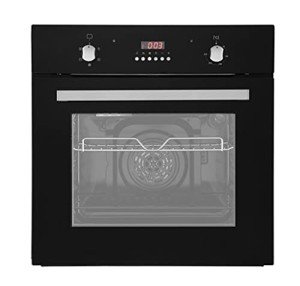The Rise of Built-In Ovens: A Seamless Approach to Modern Cooking

In contemporary kitchens, where style looks mix seamlessly with functionality, one device stands apart as a true game changer: the built-in oven. As property owners and chefs alike continue to seek innovative services that boost their cooking experience, built-in ovens have become significantly popular. This article explores the advantages, factors to consider, and patterns surrounding built-in ovens, highlighting why they are a vital function in contemporary cooking areas.
What is a Built-In Oven?
A built-in oven is a cooking area home appliance designed to be integrated into the kitchen cabinetry of a cooking area rather than standing alone. Unlike standard freestanding ovens, which can be moved and positioned anywhere, built-in ovens been available in various designs and sizes to fit particularly within designated spaces. Readily available in single or double setups, these ovens use a streamlined appearance that matches contemporary cooking area styles.
Advantages of Built-In Ovens
1. Space-Saving Design
One of the most appealing advantages of built-in ovens is their space-saving style. By integrating the oven into cabinets, you can free up important counter and floor space. This is especially beneficial in smaller kitchen areas, where making the most of room is necessary. Built-in ovens can be set up at eye level, making them more accessible and minimizing the need to flex down.
2. Aesthetic Appeal
Built-in ovens contribute to a streamlined and cohesive kitchen area style. Readily available in different surfaces-- such as stainless steel, black, white, and customized cabinets-- they can mix flawlessly into the total design. This aesthetic appeal improves the kitchen area's visual consistency and elevates the space, developing a modern-day and advanced atmosphere.
3. Improved Functionality
Lots of built-in ovens come geared up with advanced cooking technologies, such as convection cooking, steam ovens, and wise features. These improvements enable flexible cooking choices, making it easier to achieve professional-level results in your home. Smart built-in ovens can even link to Wi-Fi, making it possible for users to control the oven from another location, get notifications, and gain access to a variety of cooking programs and recipes.
4. Enhanced Ventilation
Due to the fact that built-in ovens can be integrated with cooking area hoods and ventilation systems, they can help keep better air quality and decrease cooking smells. This is especially substantial for those who enjoy to cook with aromatic spices and active ingredients, as an efficient ventilation system can keep the cooking area comfy and welcoming.
5. Personalization Options
Built-in ovens use a broad range of personalization choices to fit private cooking designs and needs. From professional-grade home appliances with several cooking modes to compact designs for smaller cooking areas, homeowners can select the oven that fits their specific requirements. Numerous makers likewise offer personalized front panels, allowing you to match the oven's look to your cabinets for a genuinely combined look.
Considerations When Choosing a Built-In Oven
While built-in ovens have many benefits, there are essential factors to consider to bear in mind before making a purchase:
1. Cost
Built-in ovens typically feature a higher price than their freestanding equivalents due to their design and setup requirements. It's important to consider both the expense of the oven and any extra expenses connected to cabinets adjustments or installation.
2. Installation Requirements
Setting up a built-in oven frequently needs professional assistance, specifically if you need to modify existing kitchen cabinetry. Make sure that you think about any costs related to installation, consisting of labor and possible kitchen cabinetry modifications.
3. Size and Dimensions
Before acquiring a built-in oven, measure the designated area precisely to make sure a correct fit. Built-in ovens been available in various sizes and configurations, so choosing one that lines up with your needs and kitchen area style is vital.
4. Way of life and Usage
Consider your cooking practices and needs when selecting a built-in oven. If you often host big gatherings, a double oven may be more useful. On the other hand, if you have a compact cooking area, a single-wall oven might be adequate.
Trends in Built-In Ovens
The kitchen home appliance market is constantly progressing, and built-in ovens are not exempt from emerging trends. Some existing trends consist of:
Smart Technology Integration: With the rise of clever home innovation, built-in ovens now frequently feature connection choices. This permits users to monitor cooking development and adjust settings through mobile apps.
Energy Efficiency: As sustainability ends up being a concern, lots of producers are purchasing energy-efficient built-in ovens that lower energy usage while preserving performance.
Multi-functional Designs: Built-in ovens now offer functions such as air frying, sluggish cooking, and steaming, offering versatility that satisfies a wide variety of cooking approaches.
Conclusion
Built-in ovens certainly represent an ideal mix of style, function, and benefit in today's kitchens. As more property owners go with this modern option, the focus shifts to developing a cooking space that is as aesthetically pleasing as it is useful. Whether inbuilt oven are constructing a brand-new home or renovating your cooking area, thinking about a built-in oven could raise your culinary experience and change your kitchen into a stylish and functional haven. With an array of choices readily available and ongoing developments in innovation, built-in ovens remain a standout option for both newbie cooks and culinary enthusiasts alike.
